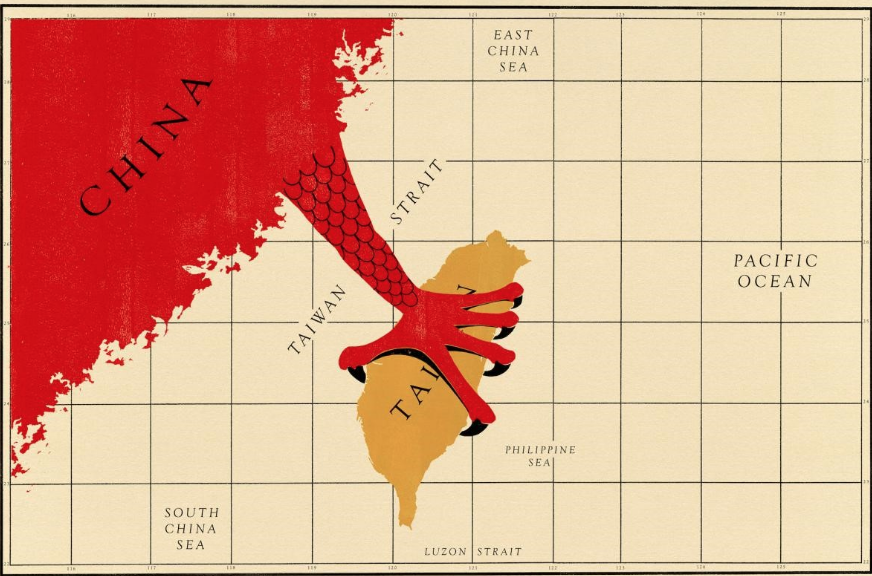|
By R. Behar Over the past few decades, tension between neighbouring China and Taiwan has suffered a staggering increase, leading to today’s troublesome situation. The story that lies behind this political turmoil is one riddled with territorial disputes, historical claims, and demonstrations of military power.
History of the tension: The first historical references to Taiwan came in Chinese records in the year 239 AD. Despite this, the country was only "discovered" when the Chinese emperor at the time sent an expeditionary force to explore the area. The expedition remains one of the steppingstones for the Chinese claim of Taiwan. After World War II, however, the control of the island was formally awarded to China, since Taiwan had been previously ruled by the Japanese empire. Briefly, after the end of the Second World War, a civil war broke out. The military struggle for the control of China between Chiang Kai Shek’s Nationalist Party and Mao Zedong’s Communist Party would rage on for four years, resulting in the deaths of 2.5 million people. After intense fighting, Mao Zedong and the Communist Party triumphed; they had gained control of China. Chiang and the remnants of his Kuomintang government were forced to flee to the island of Taiwan escaping Mao and the communists. Mainland China would come to be ruled as a Communist People’s Republic, as it is to this day. The descendants of the refugees fleeing Mao Zedong and his communist regime made up 1.5 million of Taiwan’s population at the time. This group would go on to dominate Taiwanese politics throughout the 20th century. Throughout this time, a process of democratisation occurred as Taiwan abandoned its former dictator-like government. The beginning of an independent Taiwan: By the 1980’s China and Taiwan relations had improved as China proposed a “two systems one nation” system to Taiwan. Effectively, Taiwan would gain significant autonomy whilst officially being a Chinese province. The same system was established in Hong Kong, but it did not entice the Taiwanese government. Thus, Taiwan proceeded to decline the proposal, but relaxed trade tariffs and tourism requirements, demonstrating a commitment to positive relations with China. A steep turn: However, in the year 2000, Chen Shui-Ban, a member of the Democratic Progressive Party (DPP), was elected as president. As a progressive, he openly backed Taiwanese independence, which alarmed the Chinese government. In 2004 Chen was re-elected, indicating that the Taiwanese population longed for independence. In response, China created an anti-secession law, stating its right to use “non-peaceful means” against Taiwan if it tried to “secede” from China. From this point onwards the situation would only digress. In 2016, Taiwan elected current president Tsai Ing-Wen also of the DPP. She actively advocated for independence during her campaign placing Taiwan in a vulnerable situation. US involvement: By 2016, with scaling tensions, the USA decided to step-in to support the Taiwanese. President Trump would re-introduce relations with Taiwan once he spoke to President Tsai over the phone. During his administration, the US pledged to support the country by supplying Taiwan with defensive weapons in case of a potential attempt at forceful reunification. The US intensified its outreach to Taiwan, reassuring the government of its continued support, especially once China implemented a national security law in Hong Kong as a sign of assertiveness in the region. China did not approve of the US’s outreach to Taiwan. Thus, the Chinese continuously warned the US “not to send any wrong signals that ‘Taiwan independence’ elements to avoid severe damage to China-US relations”. This clear warning to the US was exemplified once China conducted a live-fire military exercise in the Taiwan strait during a visit of US government officials to Taipei (Taiwanese capital city). The US government was not intimidated as President Joe Biden then stated that his administration’s commitment to Taiwan was still “rock solid”. This strong stance from the western leader was a call for Chinese retaliation. In the first few days of Biden’s presidency, Taiwan reported that the Chinese government had flown the largest number of military jets over Taiwan’s airspace in history. A clear warning. Where the current situation lies: China only augmented tensions by further launching two military exercises over Taiwanese territory. Record numbers of Chinese warplanes were flown over Taiwanese air defence zones for four consecutive days in early October. This led to the worst period in Chinese and Taiwanese relations in the past 40 years. China continues to consider the use of force as a measure to reunify Taiwan with the rest of the country. This has led to the Taiwanese defence minister acknowledging that China already has the capacity to invade Taiwan. Meanwhile, the US continues to sell arms to Taiwan and wishes to keep the agreement they currently have with China. Hence, allowing the US government to maintain unofficial ties with the Taiwanese. At this moment tensions remain heightened as the Goliath that is China gives every signal of a probable forced reunification with Taiwan. Bibliography: “China-Taiwan Military Tensions 'Worst in 40 Years'.” BBC News, BBC, 6 Oct. 2021, https://www.bbc.com/news/world-asia-58812100. “Civil War (1945–49).” Encyclopædia Britannica, Encyclopædia Britannica, Inc., https://www.britannica.com/place/China/Civil-war-1945-49. “What's behind the China-Taiwan Divide?” BBC News, BBC, 26 May 2021, https://www.bbc.com/news/world-asia-34729538.
0 Comments
Your comment will be posted after it is approved.
Leave a Reply. |

